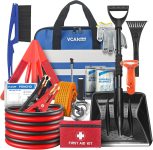
Christmas Car Emergency Kit with Jumper Cable, Winter Car Kit Review – Oemiu
Navigating Winter Roads: Your Ultimate Christmas Car Emergency Kit Guide
The festive season is upon us, a time filled with joy, family gatherings, and perhaps, a road trip or two. But winter, with its unpredictable weather, can quickly turn holiday cheer into highway horror. That’s why preparing a robust Christmas car emergency kit is paramount. It’s not just about having jumper cables; it’s about equipping yourself with the tools and resources to handle a range of unexpected situations, from a dead battery on a frosty morning to getting stranded in a snowstorm. Think of it as a safety net, a proactive measure to ensure your journey, and the journeys of those you love, remain safe and stress-free, allowing you to focus on what truly matters: enjoying the holidays. A well-stocked winter auto emergency kit can be the difference between a minor inconvenience and a potentially life-threatening situation. Let’s delve into what constitutes an effective Christmas car emergency kit and how to choose the right one for your needs.
Essential Components of a Reliable Christmas Car Emergency Kit
Building a winter car kit isn’t just about grabbing a few random items and tossing them in the trunk. It’s a carefully curated collection of tools and supplies designed to address specific winter-related challenges. The core of any kit is, of course, a set of heavy-duty jumper cables. Look for cables with thick gauge wiring (at least 6-gauge) and strong clamps to ensure a reliable connection, even in freezing temperatures. A portable jump starter is an excellent alternative, offering the convenience of starting your car without needing another vehicle. Beyond jump-starting capabilities, consider the following key elements:
* **Warmth and Visibility:** Blankets (wool or thermal) are crucial for staying warm if you’re stranded. High-visibility vests are essential for roadside safety, allowing other drivers to see you clearly. Include a flashlight with extra batteries or a hand-crank powered flashlight to signal for help or inspect your vehicle in the dark. Flares or reflective triangles can alert oncoming traffic to your presence.
* **Tools and Repair:** A basic tool kit with pliers, screwdrivers, and a wrench can handle minor repairs. Duct tape is incredibly versatile for temporary fixes. A tire pressure gauge is essential for maintaining proper tire inflation, which affects handling and fuel efficiency in cold weather.
* **Traction and Recovery:** A collapsible shovel is indispensable for digging your car out of snow. Traction mats or sand can provide grip on icy surfaces. A tow rope is useful if you need to be pulled out of a ditch, but always use it with caution and knowledge of proper towing techniques.
* **First Aid and Communication:** A well-stocked first aid kit is a must-have for treating minor injuries. Include pain relievers, bandages, antiseptic wipes, and any personal medications. A whistle can be used to signal for help if you’re out of sight of the road. Consider a car phone charger or power bank to ensure your phone stays operational.
* **Food and Water:** Non-perishable food items like energy bars, granola, and canned goods can provide sustenance if you’re stranded for an extended period. Bottled water is essential for hydration.
* **Miscellaneous Items:** A multi-tool with a knife, pliers, and other useful tools can be invaluable. A notepad and pen can be used to record information or leave messages. Hand warmers can provide temporary relief from the cold. A window scraper and de-icer are essential for clearing your windshield.
Carefully consider the specific conditions you’re likely to encounter. If you live in an area with heavy snowfall, a more robust shovel and traction devices are necessary. If you frequently travel in remote areas, consider a satellite communication device. Building a winter travel emergency kit tailored to your specific needs is the best way to ensure your safety and peace of mind.
A Deep Dive into Winter Car Kit Reviews: Evaluating Performance and Value
With countless options on the market, choosing the right winter car survival kit can feel overwhelming. Winter car kit reviews are an invaluable resource, providing insights into the performance, durability, and value of different products. But it’s important to understand how to interpret these reviews effectively. Focus on reviews that are based on real-world testing and user experiences. Look for reviewers who assess the quality of the materials, the functionality of the tools, and the overall usefulness of the kit in different situations. Pay attention to comments about the durability of the jumper cables, the effectiveness of the traction devices, and the warmth provided by the blankets.
Avoid reviews that are solely based on product specifications or marketing claims. Look for reviewers who actually used the kit in winter conditions and can provide firsthand feedback. Consider the specific needs of your vehicle and driving habits. If you drive a large SUV, you’ll need a different kit than someone who drives a compact car. Read reviews from people who have similar vehicles and driving patterns. One key aspect to consider is the overall organization and portability of the kit. Is it easy to access the items you need in an emergency? Does the kit take up too much space in your trunk? A well-designed kit should be compact and organized, allowing you to quickly find what you need when you need it.
Also, think about the longevity of the items included. Are the jumper cables likely to corrode quickly? Will the flashlight still work after being stored in a cold car for several months? Consider investing in higher-quality items that will last longer and provide better performance. Don’t be afraid to piece together your own kit instead of relying solely on pre-packaged options. This allows you to customize the contents to your specific needs and preferences. For example, you might prefer a different type of shovel or a higher-quality blanket than what’s included in a standard kit. Ultimately, the best winter car emergency kit is the one that meets your specific needs, provides reliable performance, and gives you peace of mind on the road.
| Feature | Pre-packaged Kit | DIY Kit |
|---|---|---|
| Cost | Often more expensive initially | Can be more cost-effective in the long run |
| Customization | Limited customization | Fully customizable to your needs |
| Convenience | Ready to use out of the box | Requires time and effort to assemble |
| Quality | Can vary widely depending on the brand | You control the quality of each item |
| Organization | May not be optimally organized | You can design your own organization system |
Jumper Cables: The Lifeline of Your Christmas Car Emergency Kit
Jumper cables are arguably the most crucial component of any Christmas car emergency kit. A dead battery is a common occurrence, especially in cold weather, and being able to jump-start your car can save you from being stranded in a potentially dangerous situation. However, not all jumper cables are created equal. When choosing jumper cables, pay close attention to the gauge of the wire. The lower the gauge number, the thicker the wire, and the more current it can carry. For most cars, 6-gauge cables are sufficient, but for larger vehicles or those with high-performance batteries, 4-gauge or even 2-gauge cables may be necessary. The length of the cables is also important. Shorter cables may not reach between vehicles parked in certain positions. Look for cables that are at least 12 feet long, and preferably 20 feet, to provide ample reach.
The quality of the clamps is another crucial factor. The clamps should be made of sturdy metal and have strong springs to ensure a secure connection to the battery terminals. Avoid clamps made of cheap plastic, as they can easily break or melt. The clamps should also be insulated to prevent accidental shocks. It’s also a good idea to look for cables that are tangle-resistant, as tangled cables can be frustrating to deal with, especially in cold weather. When using jumper cables, always follow the manufacturer’s instructions carefully. Connect the cables in the correct order to avoid damaging your vehicle’s electrical system. Always wear safety glasses to protect your eyes from sparks.
Consider a portable jump starter as an alternative to traditional jumper cables. These devices are self-contained and don’t require another vehicle to jump-start your car. They are also relatively compact and easy to store. However, it’s important to choose a jump starter with sufficient cranking amps for your vehicle. Read reviews and compare specifications carefully before making a purchase. Remember to charge the jump starter regularly to ensure it’s ready to use when you need it. Regularly inspect your jumper cables for signs of damage, such as frayed insulation or corroded clamps. Replace them if they are damaged, as damaged cables can be dangerous to use. Storing your jumper cables properly can also extend their lifespan. Keep them in a dry, protected location to prevent corrosion.
Building Your Personalized Winter Car Safety Kit: Tailoring to Your Needs
While pre-packaged winter car safety kits offer convenience, building your own personalized kit allows you to tailor it to your specific needs and preferences. Start by assessing your driving habits, the climate you live in, and the type of vehicle you drive. Do you frequently travel in remote areas with limited cell service? Do you live in an area with heavy snowfall or icy conditions? What are the common mechanical issues you’ve experienced with your vehicle in the past?
Once you have a clear understanding of your needs, you can start selecting the individual items for your kit. Invest in high-quality jumper cables, a reliable shovel, and a warm blanket. Consider adding items that address specific challenges you’re likely to encounter. For example, if you frequently drive on unpaved roads, a tire repair kit and a portable air compressor can be invaluable. If you have young children, include extra diapers, wipes, and snacks. If you have pets, include food, water, and a leash.
Think about the specific tools and supplies you’ll need to handle common mechanical issues with your vehicle. Do you know how to change a tire? If so, make sure you have a lug wrench and a jack. Do you know how to check your oil and coolant levels? If so, include a funnel and extra fluids. A well-stocked tool kit can help you handle minor repairs on the road. Don’t forget about personal comfort items. Include extra gloves, hats, and socks to keep you warm and dry. Pack a small first-aid kit with pain relievers, bandages, and antiseptic wipes. Consider adding entertainment items, such as a book, a deck of cards, or a portable DVD player, to help pass the time if you’re stranded. Organize your kit in a sturdy container that’s easy to carry and store in your trunk. Use smaller bags or containers to organize individual items and prevent them from getting scattered. Regularly inspect your kit and replace any items that are expired or damaged. Consider practicing using the items in your kit, such as changing a tire or jump-starting your car, so you’re prepared to handle these tasks in an emergency. Building your own winter car emergency kit takes time and effort, but it’s an investment in your safety and peace of mind.
The Critical Role of Communication in Your Winter Auto Emergency Kit
In any emergency situation, communication is paramount, and a winter auto emergency kit should prioritize keeping you connected. While a fully charged cell phone is a starting point, relying solely on it can be risky, especially in remote areas where signal strength is weak or non-existent. Therefore, having backup communication methods is crucial. A car phone charger is essential for keeping your phone powered up during long journeys. Consider investing in a portable power bank as well, which can provide additional charging capacity if you’re stranded for an extended period.
Beyond cellular communication, explore alternative options such as a two-way radio or a satellite communication device. Two-way radios allow you to communicate with other drivers or emergency services within a limited range. Satellite communication devices, such as satellite phones or personal locator beacons (PLBs), provide connectivity even in areas without cell service. PLBs can send a distress signal to emergency services, alerting them to your location and the nature of your emergency.
Equip yourself with essential emergency contact information, including the phone numbers of family members, friends, and your insurance company. Keep a written copy of this information in your kit, as you may not be able to access it on your phone if the battery is dead. Learn how to use your vehicle’s emergency features, such as the hazard lights and the horn. These features can help attract attention and signal for help. Consider taking a basic first-aid and CPR course to learn how to provide assistance to yourself or others in an emergency situation. Familiarize yourself with the local emergency services and their contact information. Know the location of the nearest hospitals and urgent care centers. Download offline maps of the areas you’ll be traveling through. These maps can be invaluable if you lose cell service. Establish a communication plan with your family and friends before embarking on a winter road trip. Let them know your route, your estimated arrival time, and your contact information. Agree on a check-in schedule and stick to it. By prioritizing communication in your winter car safety kit, you can significantly increase your chances of getting help quickly and safely in an emergency.
Frequently Asked Questions
What is the most important item in a Christmas car emergency kit?
The most important item in a Christmas car emergency kit is arguably the set of jumper cables or a portable jump starter. A dead battery is a common issue during winter due to the cold temperatures affecting battery performance. Being able to jump-start your car can prevent you from being stranded in potentially dangerous conditions. However, a truly comprehensive kit also includes items for warmth, visibility, first aid, and communication. Having all of these elements addresses a wider range of emergency scenarios. Don’t underestimate the importance of warm blankets, high-visibility vests, a flashlight, and a first-aid kit. It’s the combination of these essential items that transforms a basic emergency kit into a truly life-saving resource. While jumper cables address a specific mechanical issue, the other components cater to broader survival needs in winter weather. Prioritize a balance of practical tools and survival supplies for a well-rounded Christmas car emergency kit.
How often should I check and restock my winter car safety kit?
It’s recommended to check and restock your winter car safety kit at least twice a year: once before the start of winter and again at the end of winter. This ensures that all items are in good working order and that any expired or used items are replaced. During your check, verify the expiration dates of any food, medications, or first-aid supplies. Inspect the batteries in your flashlight and replace them if necessary. Examine the jumper cables for signs of damage, such as frayed insulation or corroded clamps. Make sure your shovel is in good condition and that your traction devices are still effective. Check the air pressure in your spare tire and inflate it if needed. If you’ve used any items from your kit during the winter, such as bandages or energy bars, replenish them immediately. It’s also a good idea to review the contents of your kit with your family members or anyone else who might be using your vehicle. Make sure they know where the kit is located and how to use the various items.
What size shovel should I include in my Christmas car emergency kit?
The ideal shovel for your Christmas car emergency kit should be compact enough to store easily in your trunk or cargo area, yet effective enough to dig your car out of snow. A folding or collapsible shovel is a great option, as it can be easily stored without taking up too much space. Look for a shovel with a sturdy blade made of metal or durable plastic. The handle should be long enough to provide adequate leverage, but not so long that it’s difficult to maneuver in tight spaces. A handle length of around 24 to 36 inches is typically sufficient. Consider a shovel with a D-grip handle, as it provides a comfortable and secure grip, even when wearing gloves. Avoid shovels that are too small or flimsy, as they may not be effective for digging through deep snow. Before purchasing, check reviews to see how others have rated the shovel’s durability and performance in winter conditions.
Is it better to buy a pre-made or DIY winter car kit?
The best choice between a pre-made or DIY winter car kit depends on your individual needs, preferences, and budget. Pre-made kits offer convenience, as they come with a selection of essential items already assembled in a single package. This can be a good option if you’re short on time or don’t want to spend the effort of sourcing individual items. However, pre-made kits may not always contain the highest-quality items, and they may not be tailored to your specific needs. Building your own DIY kit allows you to customize the contents to your exact requirements and choose higher-quality items. This can be a more cost-effective option in the long run, as you can avoid paying for items you don’t need or want. However, building a DIY kit requires more time and effort, as you’ll need to research and purchase each item individually.
What type of blanket is best for a winter car survival kit?
The best type of blanket for a winter car survival kit is one that is warm, lightweight, and compact. Wool blankets are a classic choice, as they provide excellent warmth even when wet. However, wool blankets can be bulky and heavy. Thermal blankets, such as those made of fleece or Mylar, are lightweight and compact, but they may not be as warm as wool blankets. Consider a combination of both types of blankets for optimal warmth and portability. Pack a wool blanket for primary warmth and a thermal blanket as a backup. Look for blankets that are machine washable and dryer-safe for easy cleaning. Store the blankets in a waterproof bag to keep them dry and protected from the elements.
What are some common mistakes people make when preparing a Christmas car emergency kit?
One common mistake is neglecting to personalize the kit to their specific needs and vehicle. A kit designed for a compact car driven in urban areas will differ significantly from one needed for a large SUV traveling in remote, snowy regions. Another mistake is skimping on quality, opting for cheaper items that may not perform well in an emergency. Jumper cables with thin gauge wiring or a flimsy shovel can be useless when you need them most. Failing to regularly check and restock the kit is another frequent error. Batteries die, food expires, and first-aid supplies get used, rendering the kit incomplete or ineffective. Forgetting about communication is also a significant oversight. Relying solely on a cell phone without a backup power source or alternative communication method can leave you stranded in areas with poor or no signal. Finally, not knowing how to use the items in the kit is a critical error. Taking the time to familiarize yourself with the tools and supplies, such as practicing changing a tire or using jumper cables, can make all the difference in an emergency situation.
Is a portable jump starter a good replacement for jumper cables in a winter car kit?
A portable jump starter can be a valuable addition to a winter car emergency kit and, in many ways, offers advantages over traditional jumper cables. One of the biggest benefits is self-sufficiency; you don’t need another vehicle to jump-start your car. This is particularly useful in remote locations or when other vehicles are unavailable. Many jump starters also come with additional features, such as USB ports for charging electronic devices and a built-in flashlight. However, it’s essential to choose a jump starter with sufficient cranking amps for your vehicle’s engine size. Smaller jump starters may not be powerful enough to start larger engines, especially in cold weather. It’s also crucial to regularly charge the jump starter to ensure it’s ready to use when needed. While a jump starter can be a convenient replacement for jumper cables, it’s not a foolproof solution. In some cases, such as when the battery is severely damaged or completely drained, jumper cables may still be necessary. Therefore, having both jumper cables and a portable jump starter in your kit can provide the best of both worlds.

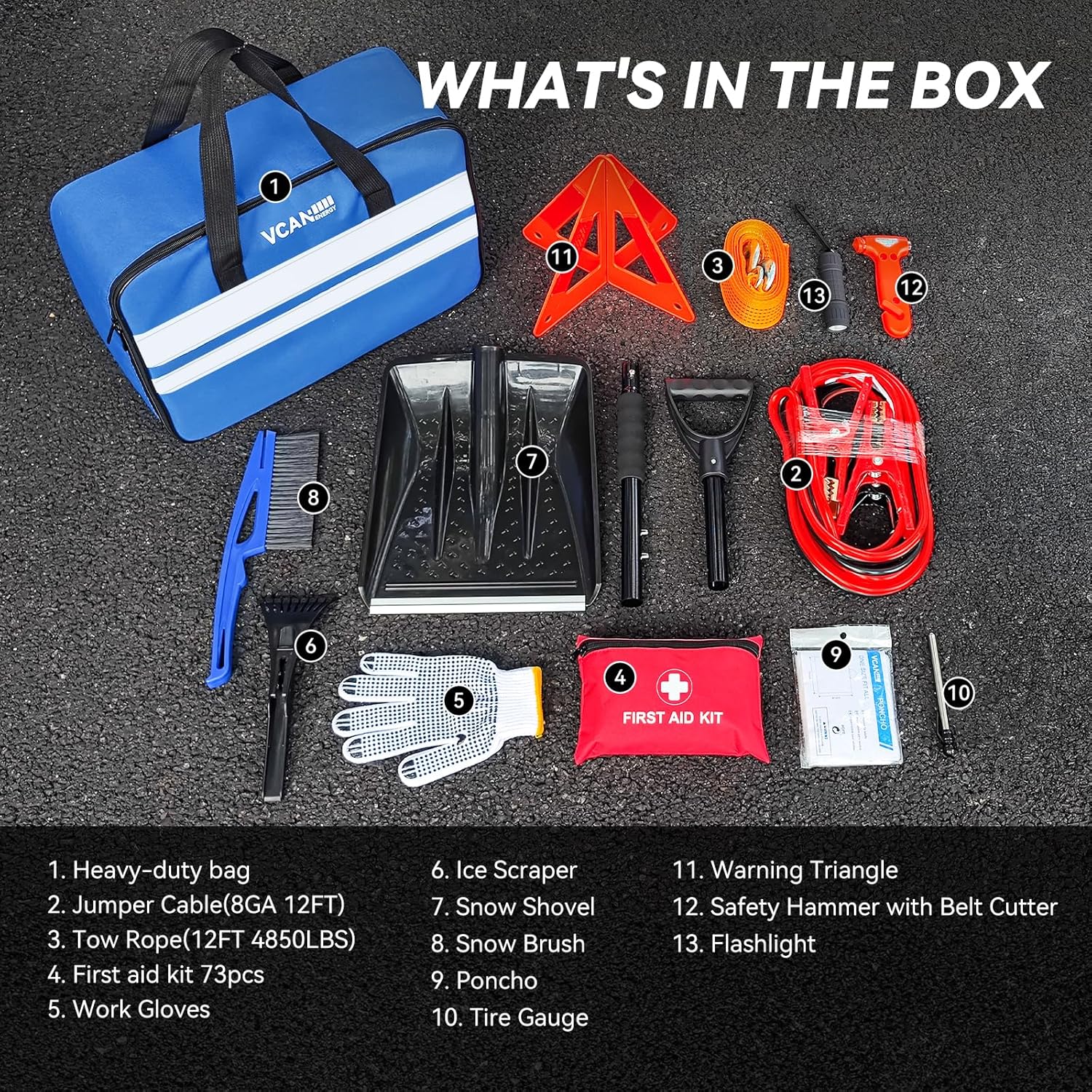
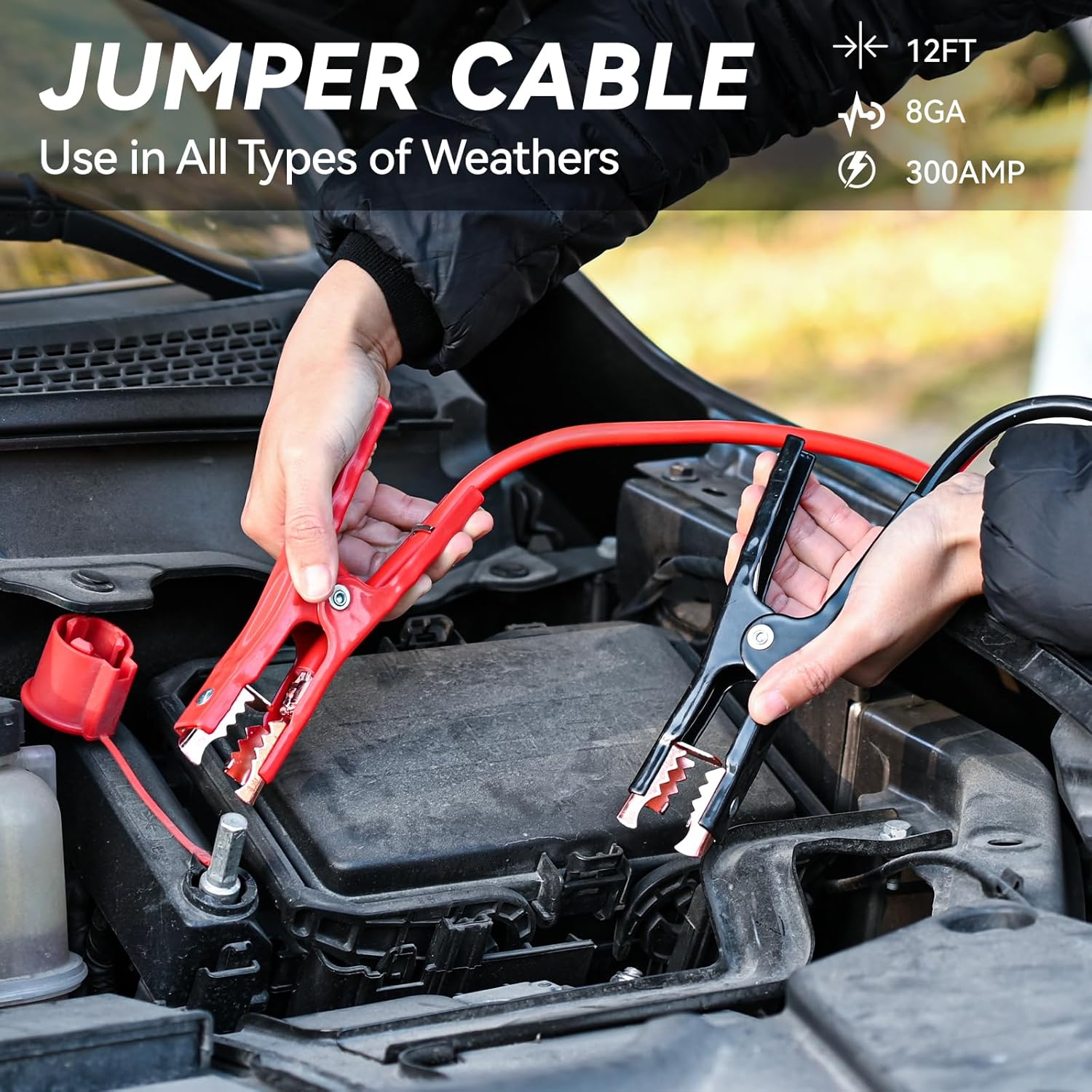

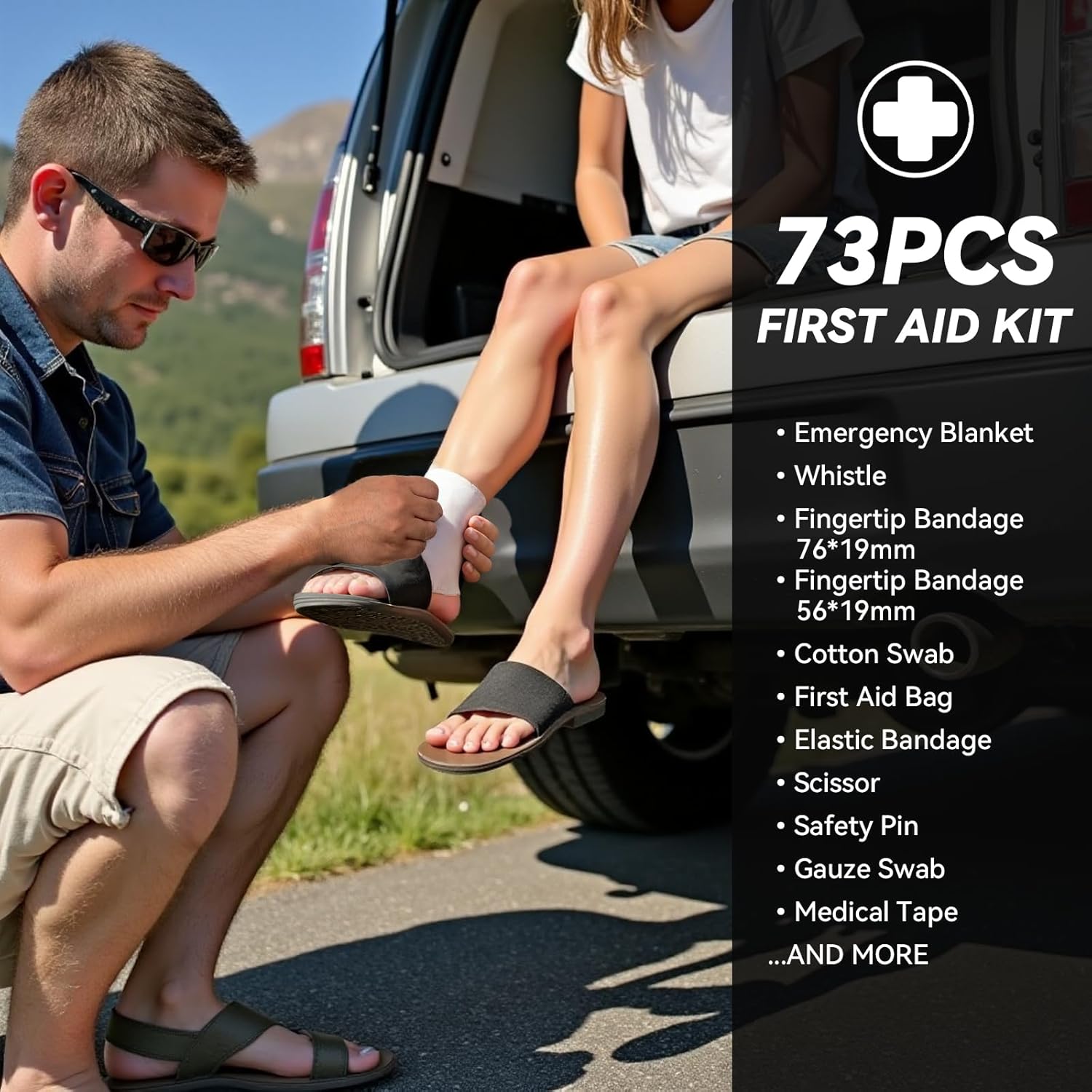
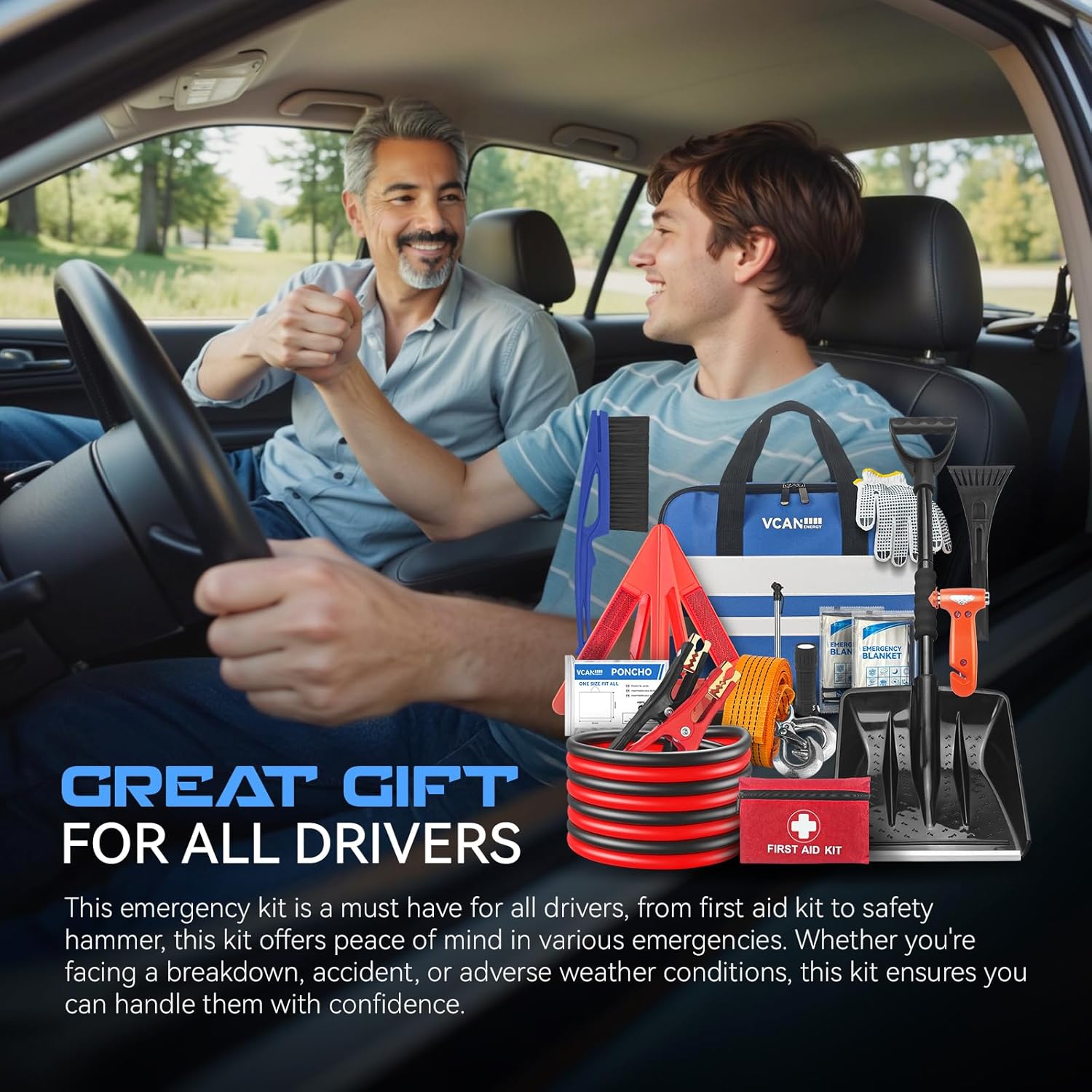
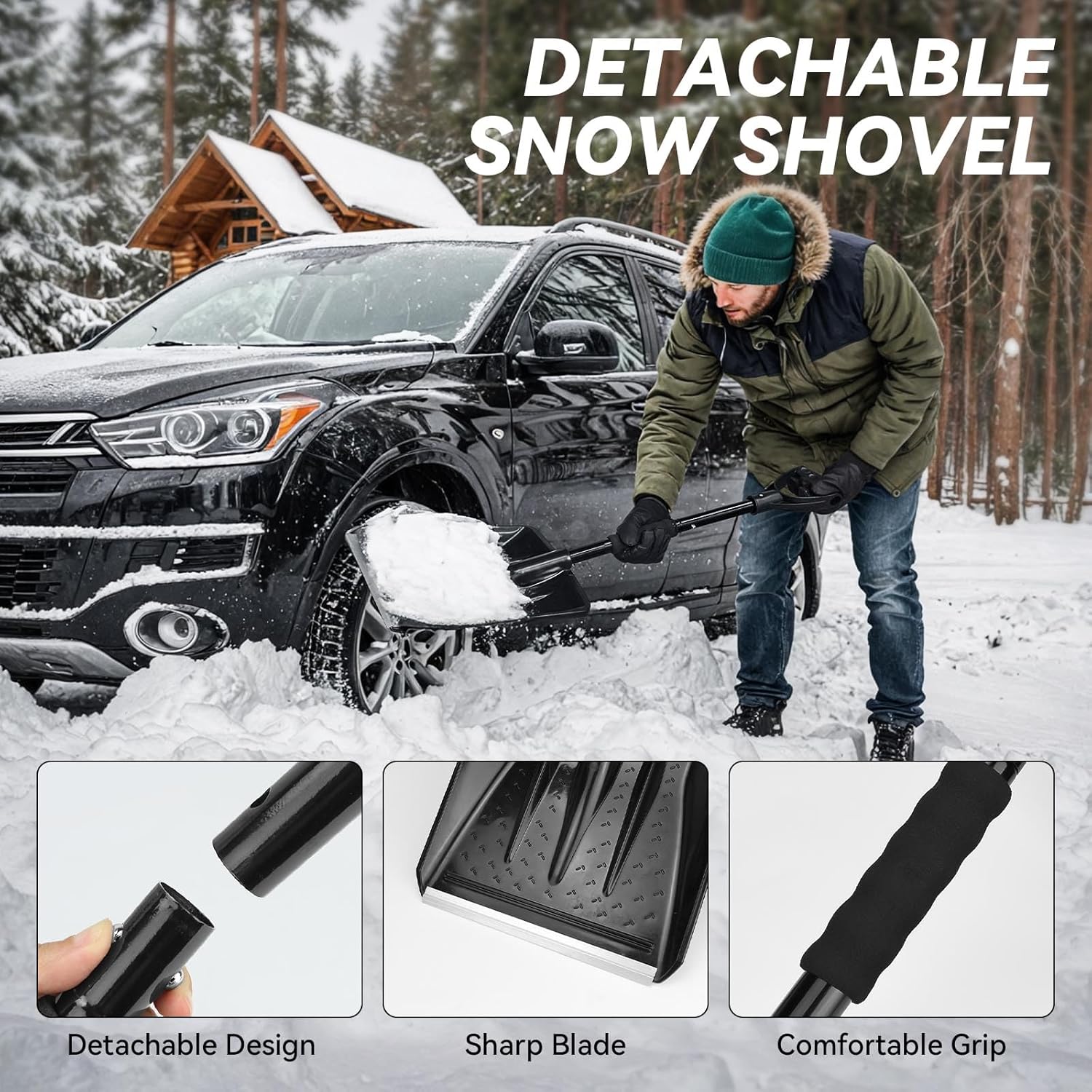
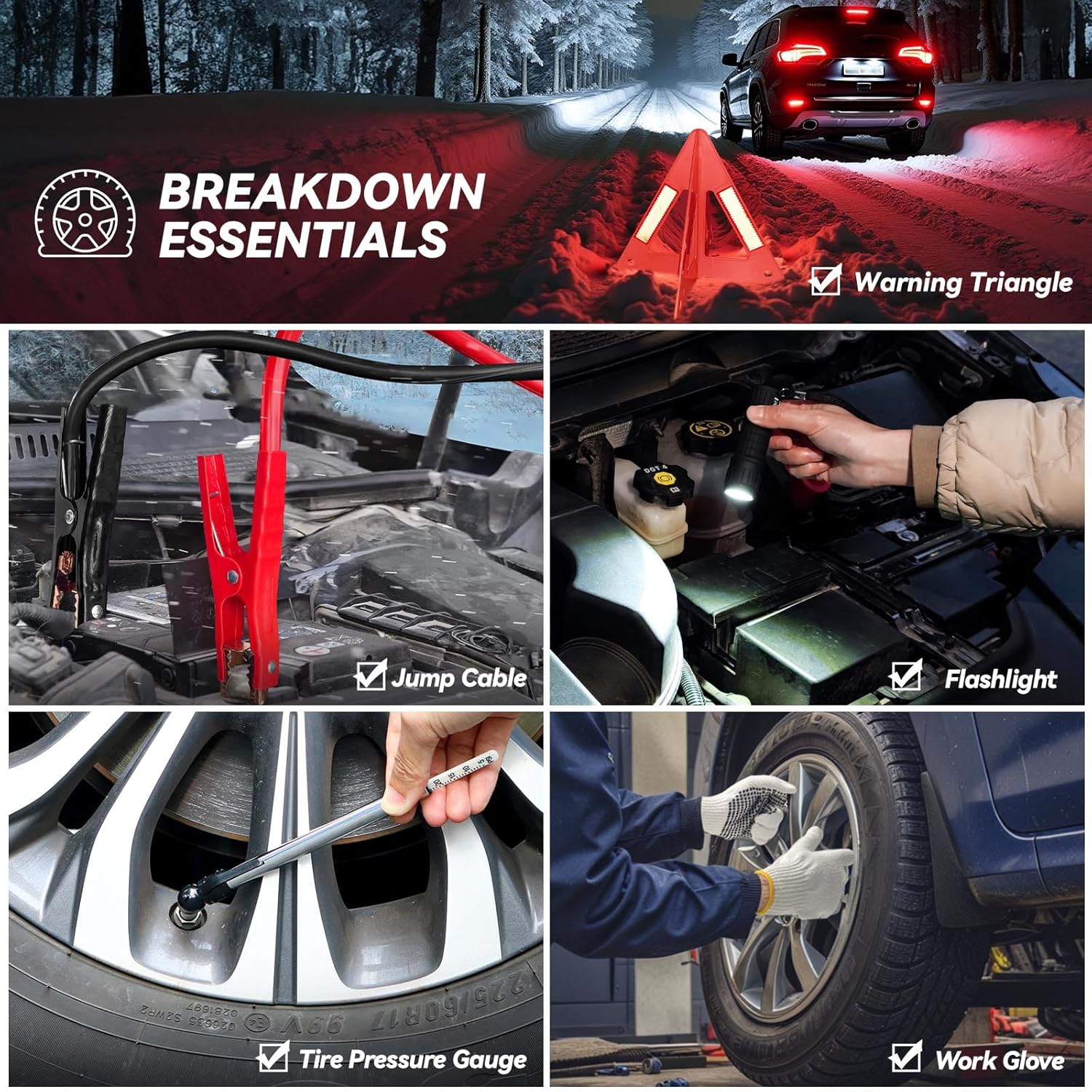
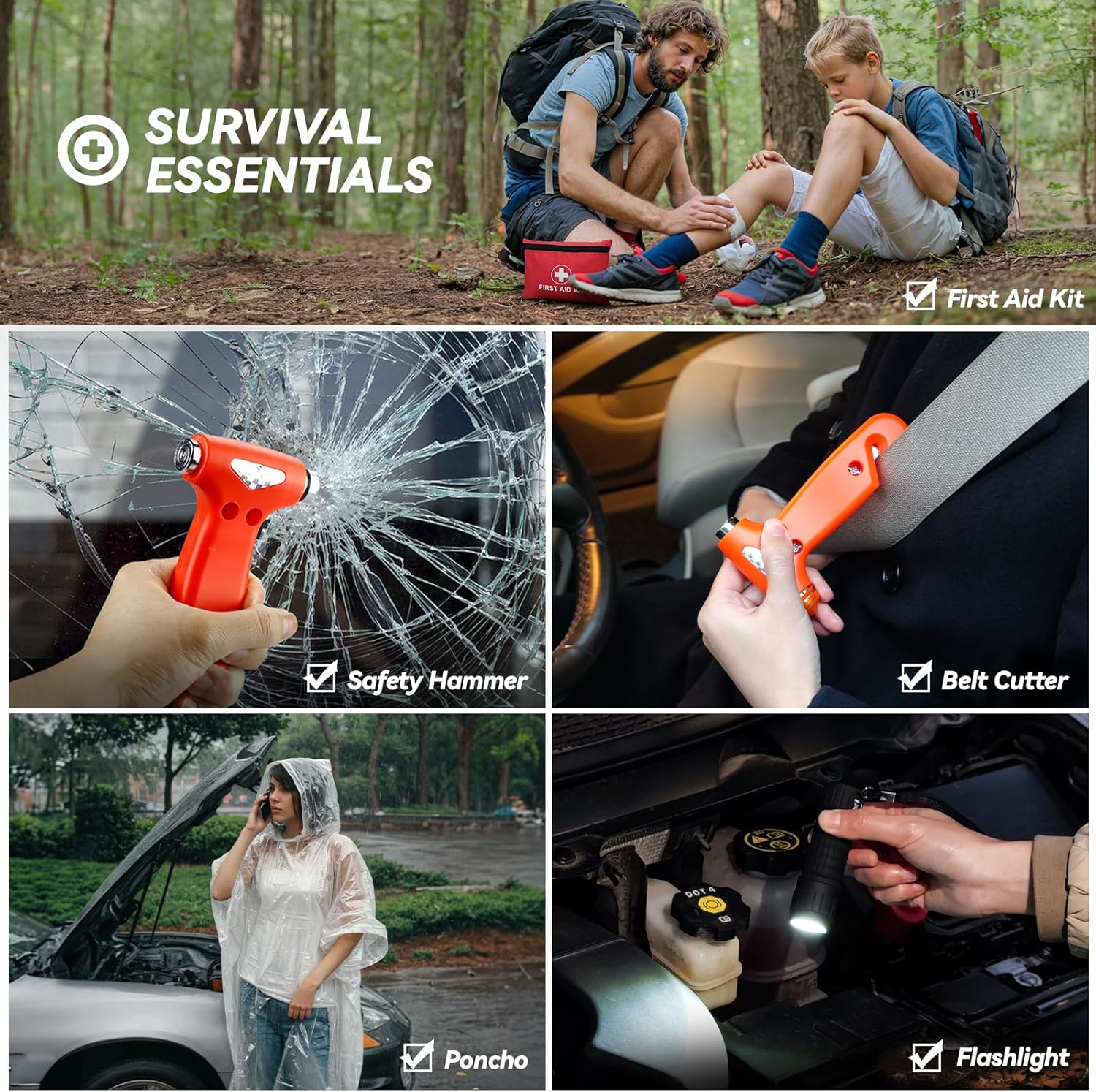
Price: $59.99 - $49.99
(as of Sep 08, 2025 08:05:58 UTC – Details)




